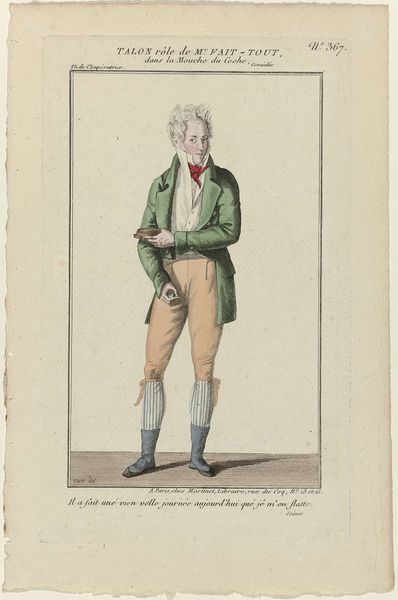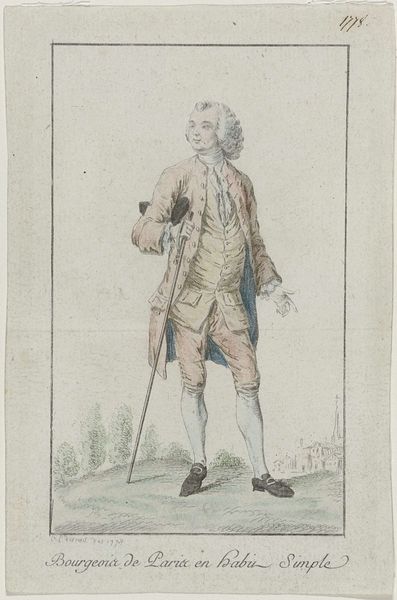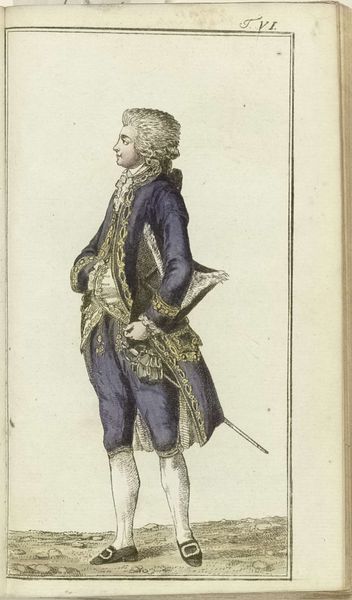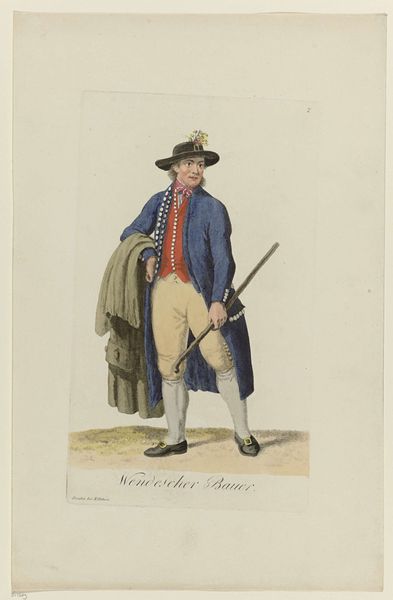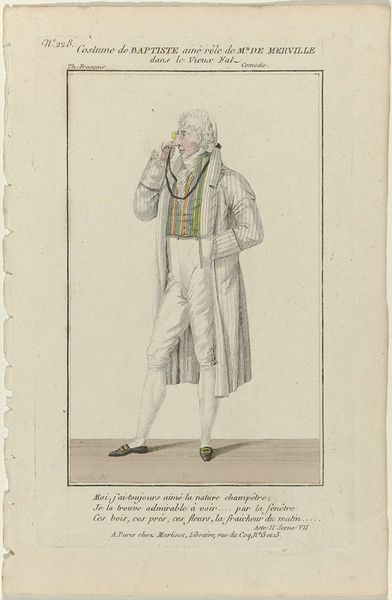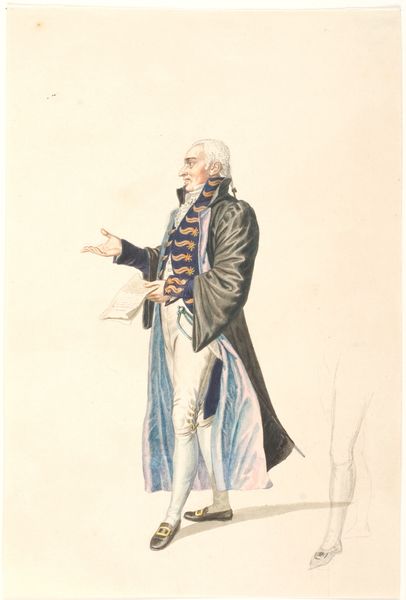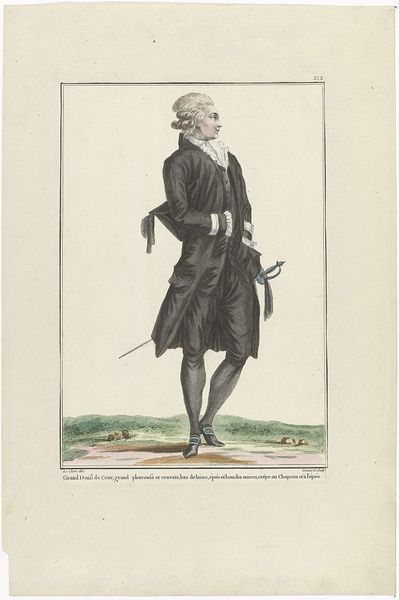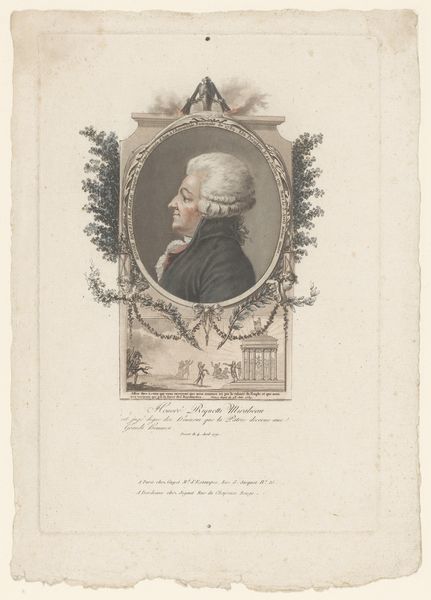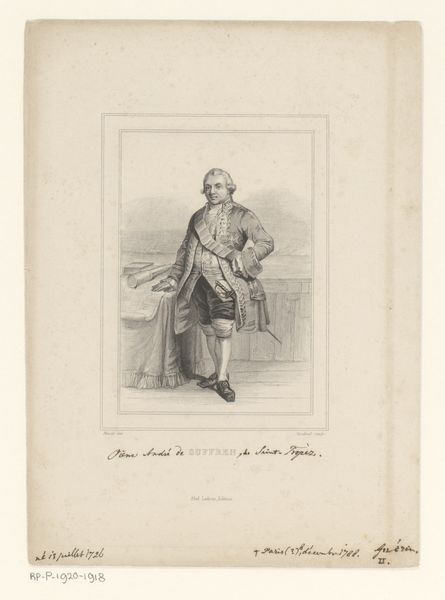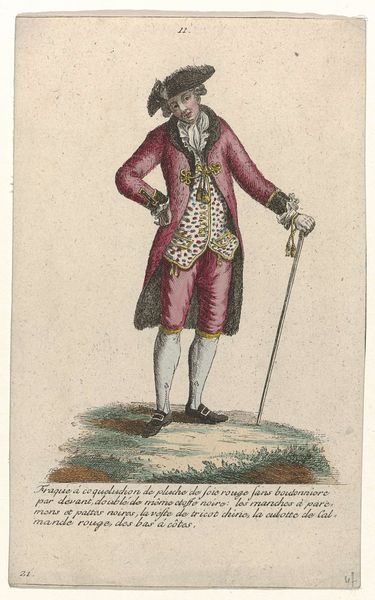
drawing, watercolor
#
portrait
#
drawing
#
watercolor
#
romanticism
#
watercolour illustration
#
genre-painting
Dimensions: height 248 mm, width 140 mm
Copyright: Rijks Museum: Open Domain
Editor: Here we have Samuel Gränicher's "Costume of an Old Merchant," a watercolor drawing dating from around 1803-1808. I’m immediately drawn to the detail in the merchant’s attire, it gives off a very composed feeling, while the slight lean conveys the weight of time. What elements stand out to you? Curator: I notice how Gränicher depicts the materials themselves. The rendering of the fabrics—the fall of the coat, the texture of the stockings—speaks volumes about production. These details aren't just aesthetic; they hint at a system of labor, likely exploitative, required to produce these commodities. Note also the contrast of the muted browns and blacks in relation to the spotless white wig, which makes me wonder: What does it mean for this 'old merchant' to be defined by his clothes? Editor: That’s fascinating! So you’re saying the seemingly simple portrayal of a man in clothes opens up into a broader discussion about societal structure? Curator: Precisely! How do the materials impact our understanding? A Materialist approach focuses on labor conditions that support this level of dress. For instance, think about the origin and availability of pigment at the time this drawing was created. This also leads into the systems that perpetuated this standard. Editor: That's really insightful. So, beyond the surface image, it’s about the underlying economic and social mechanics represented. Curator: Absolutely. This drawing prompts us to consider the very materiality of class and the power dynamics embedded within the act of representing status through clothing. Consider what kind of audience was meant to enjoy and value this drawing and the power this artist and subject are attempting to project. Editor: I hadn’t considered how the choice of medium and style implicates those power structures, I'll keep that in mind. Curator: It can reveal deeper insights into historical, social, and political landscapes. I am always sure to let material take center stage!
Comments
No comments
Be the first to comment and join the conversation on the ultimate creative platform.

